AI-Powered Data Analytics
Effectively analyze and predict data using AI, LLM, and Data Mining technologies.
- Natural_language-based
- Data_analytics
- AI_Data_Analyst
- Maximized_productivity


To effectively respond to a rapidly changing business environment, BI MATRIX develops and delivers a wide range of AI-powered data analytics solutions that revolutionize enterprise data analysis processes, supporting decision-making and strategic planning.
In the past, companies and organizations operated dedicated data analysis teams to analyze data, understand business conditions, and predict future trends. However, BI MATRIX provides a generative AI-powered data analytics environment that enables not only experts but also general business users to easily query and analyze the data they need for their tasks. Additionally, BI MATRIX offers specialized tools for data scientists, empowering businesses to gain insights into their operations and predict future outcomes based on data. This enables organizations to formulate objective and accurate management strategies while minimizing operational risks.
Technologies for Data Analytics
We utilize a variety of data analytics technologies to maximize operational efficiency, enabling employees without IT expertise to make data-driven decisions quickly and effectively.
Generative AI
Generative AI is an artificial intelligence technology that generates various forms of content—such as text, images, music, and code—based on given data or inputs. It is widely used across diverse fields and has recently evolved into domain-specific generative AI, tailored for specialized applications. BI MATRIX’s generative AI is a BI-specialized generative AI optimized for analyzing enterprise DB. It understands user queries and, like a BI expert, retrieves and analyzes meaningful information from thousands of databases, providing the results as precise answers.
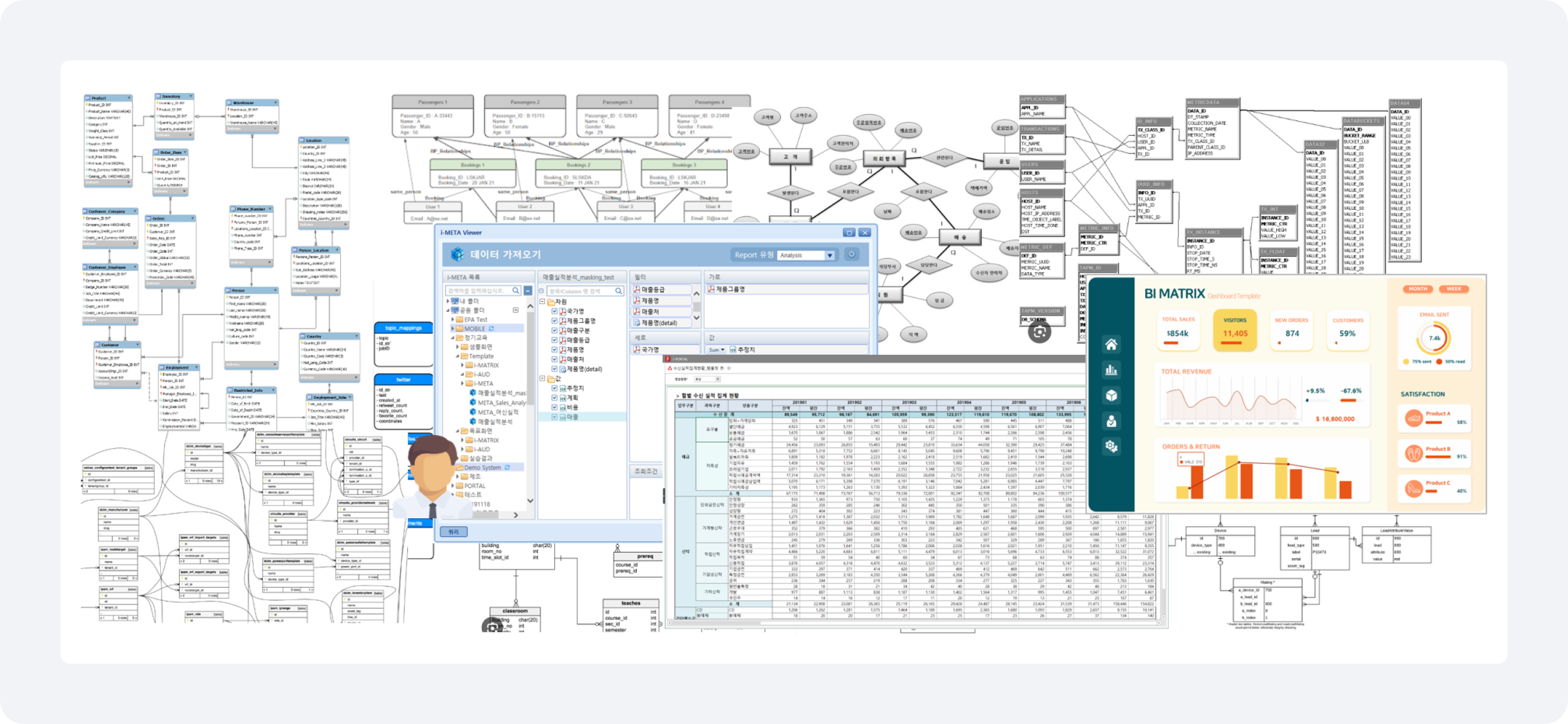
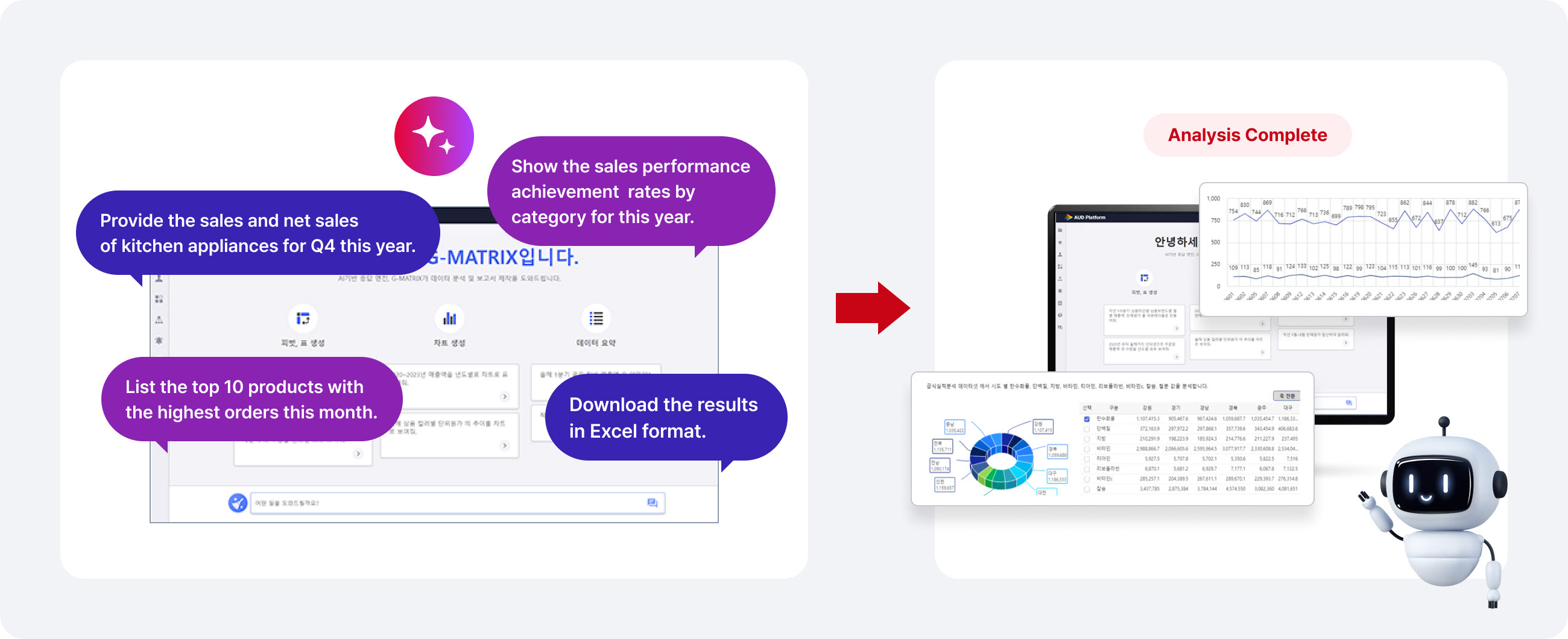
LLM
An LLM, or Large Language Model, is a large-scale AI model trained on extensive text datasets. These models are designed to process and interpret natural language inputs, enabling computers to understand and respond effectively to user queries. In BI MATRIX's data analytics services, the LLM engine analyzes natural language queries, transforms them into a structure comprehensible by the data analytics platform, and generates JSON code. Additionally, the platform supports the integration of diverse On-Premise and Cloud LLMs to accommodate various operational needs.
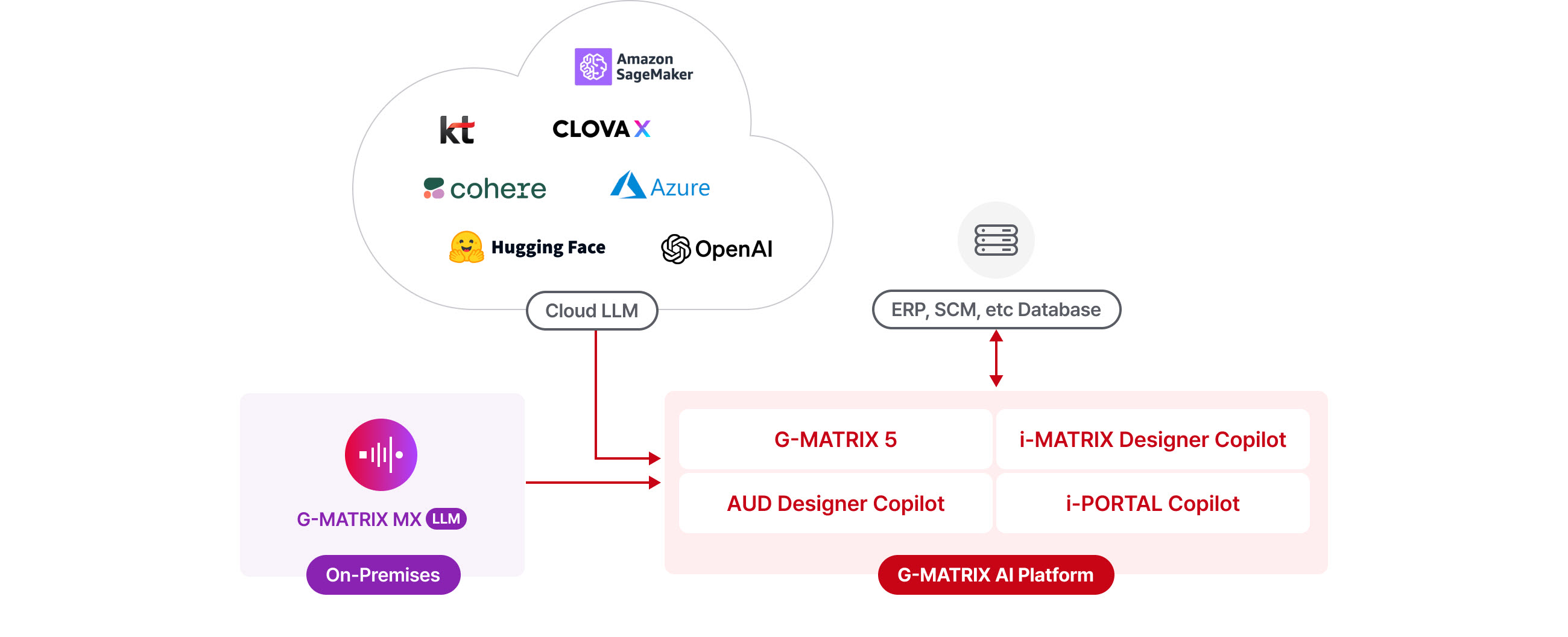
BI MATRIX also offers its proprietary language model, G-MATRIX MX-7B, fine-tuned with over 20 years of BI expertise. This model is specifically optimized for enterprise DB analytics, delivering exceptional performance. Registered on the Hugging Face platform, G-MATRIX MX-7B is available to AI researchers and developers for a wide range of applications.
Data Mining
Data mining involves analyzing large datasets to uncover meaningful patterns, relationships, and rules, extracting valuable insights that drive business problem-solving and decision-making. This process typically includes stages such as data collection and preparation, exploration, model selection and application, model evaluation, and result interpretation and utilization. Key techniques include regression analysis, classification, clustering, and association rule learning. With growing demand for advanced statistical methods and predictive analytics, the role of data mining has become increasingly important. In most organizations, data scientists or specialized analytics teams use various tools and techniques to analyze data, extract actionable insights, and forecast future events or trends based on historical data. BI MATRIX integrates data mining technologies with generative AI to provide solutions that simplify traditionally complex and advanced analytics tasks performed by data scientists or specialized teams. These solutions empower organizations to perform sophisticated analyses and make data-driven decisions using simple natural language inputs, streamlining workflows and improving efficiency.
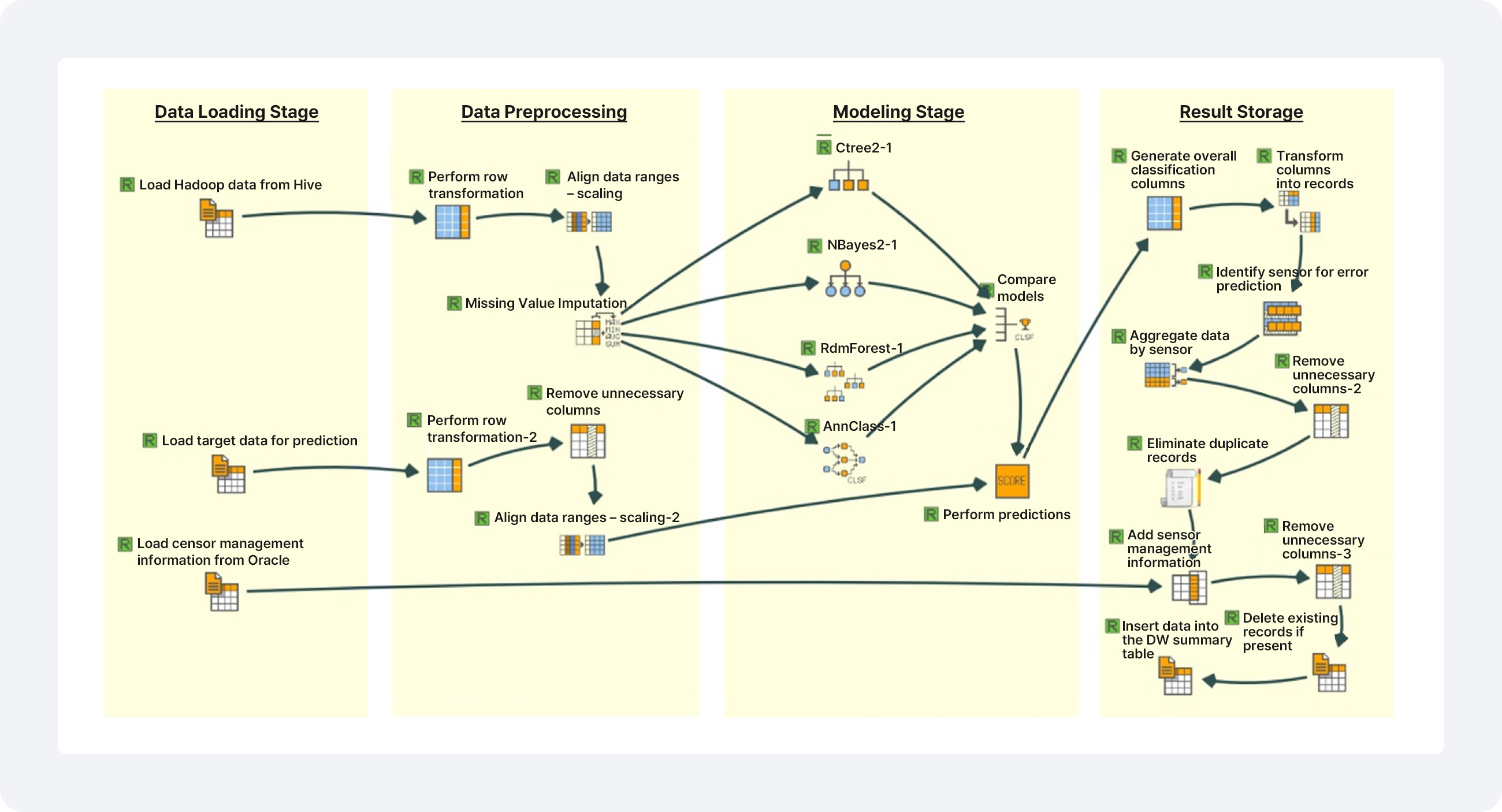
Data Analytics Case Study
Demand Forecasting for Business Planning
Forecast Execution Process
Derive correlations between external indicators and historical performance data using correlation analysis. Utilize a demand forecasting workflow to select high-accuracy statistical algorithms, generate predictions, and incorporate the results into reports.
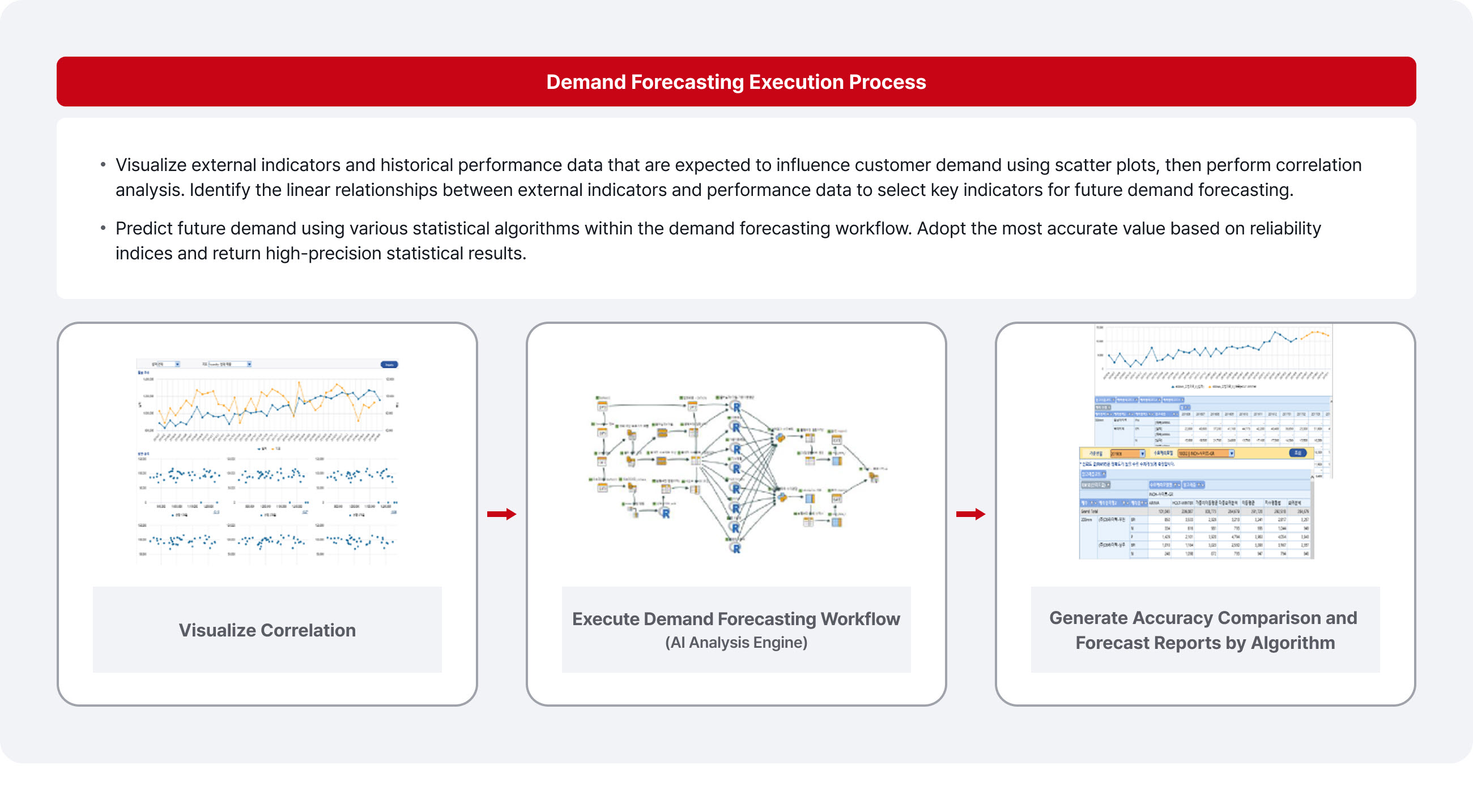
Annual/Monthly Demand Forecasting
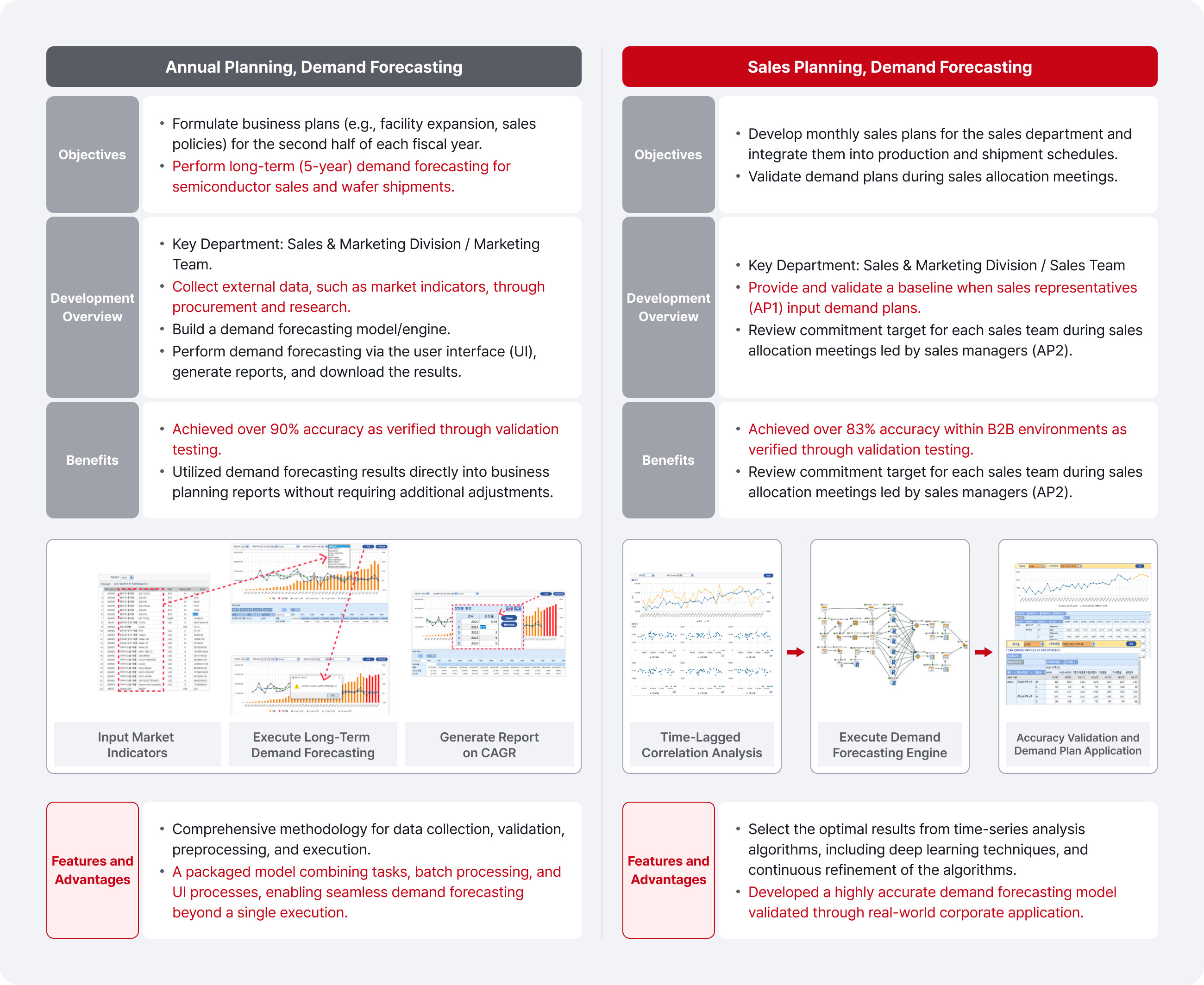
Forecasting Techniques (Algorithms)
Provides a variety of predictive analytics algorithms for both short-term and long-term demand forecasting, incorporating deep learning-based prediction methods.

Machine Learning-Based Product Recommendation
Product Recommendation System Design
Build a recommendation system powered by big data and machine learning (AI) to deliver personalized product recommendations to customers. This system supports marketing professionals in managing and monitoring product recommendations, as well as assisting product planners in selecting and organizing promotional products.

Product Recommendation Model
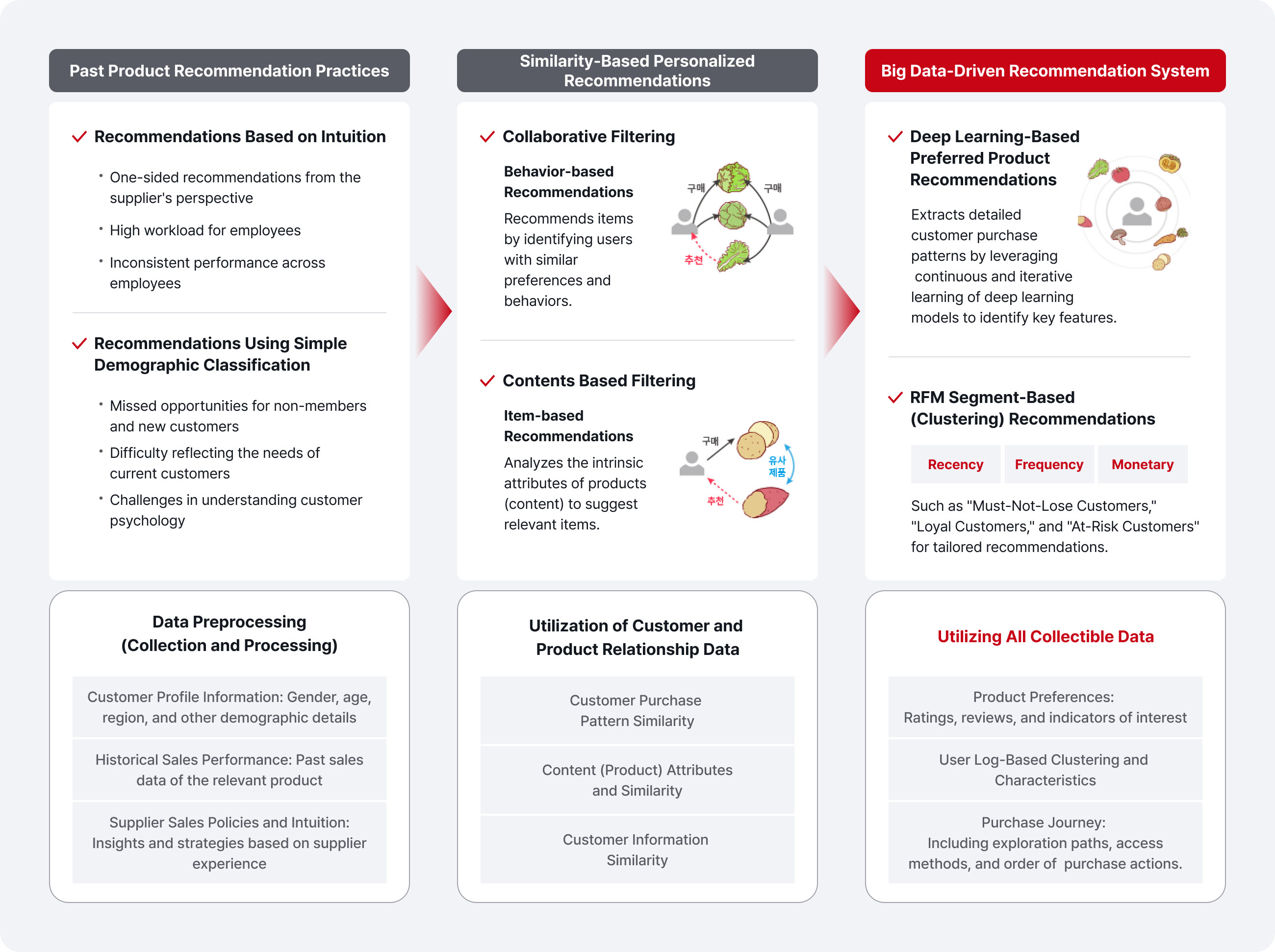
Manufacturing Data Analytics and Forecasting
Delivery Date Prediction Simulation
Predict production lead times for new orders based on standardized pre-injection molding processes and historical shipment data. Simulate various conditions to calculate the total production lead time.
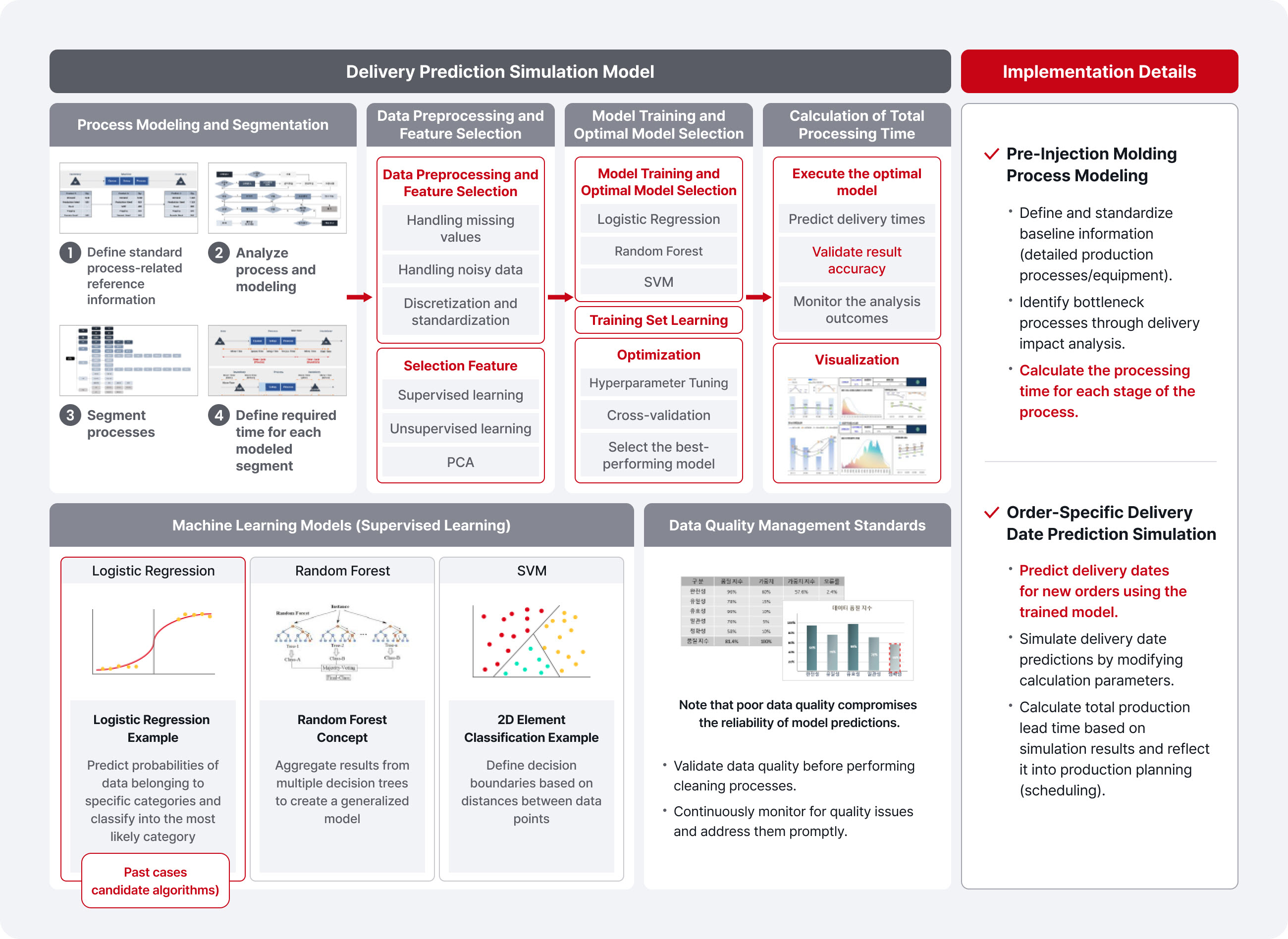
Recipe Analysis and Optimal Recipe Derivation
Identify and optimize recipe targets and candidate factors, analyze correlations and factor to select influencing factors, and calculate raw material combinations and equipment settings using experimental design models. Refine the model through iterative feedback from trial injection processes.
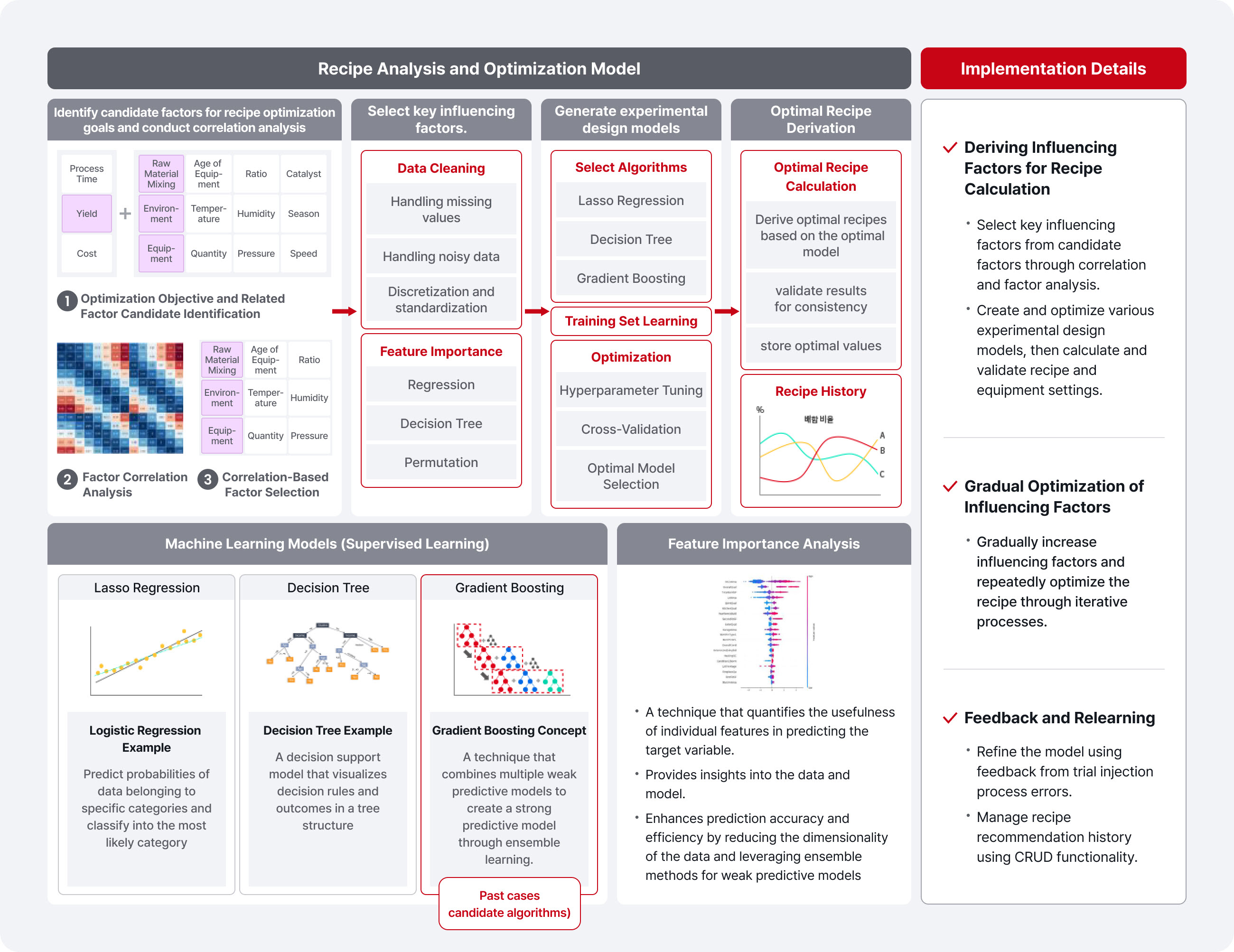
Defective Product Classification and Root Cause Analysis
Address the lack of defect classification by defining and hierarchizing defect types for produced goods. Utilize various AI algorithms to analyze, classify, and visualize defective products.
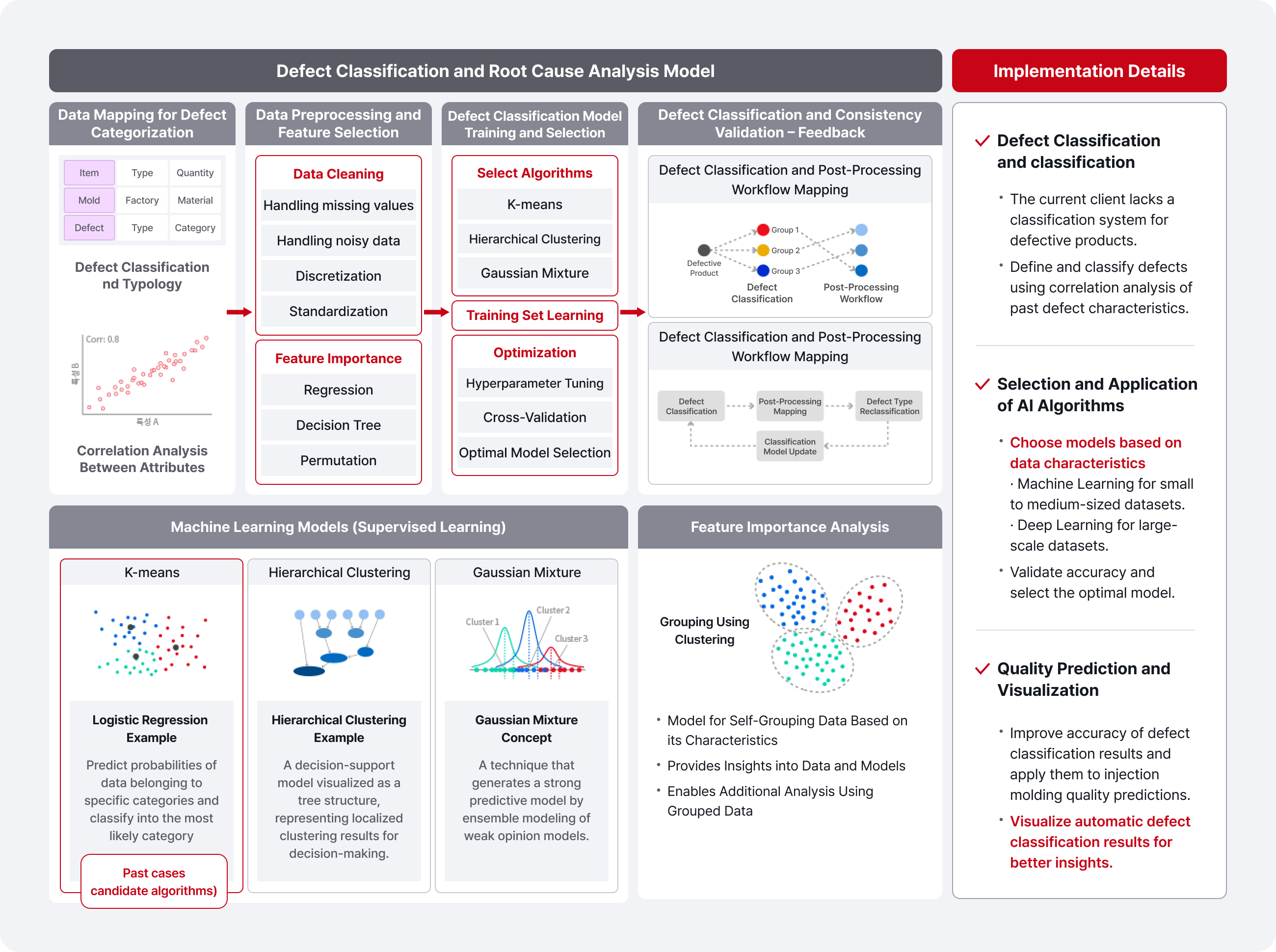
Project Cases
- Decision-Making Systems
- Big Data Analysis and Predictive Model Development
- Big Data Portal Development
- Automated Preprocessing System for Credit Information Analysis
- Demand Forecasting System Integrating Internal and External Enterprise Data
- Discount Rate Management System Using Dynamic Pricing
- Personalized Marketing System
- National Air Quality Forecasting System – Accuracy Analysis
- Supercomputing-Based Combat Situation Analysis and Predictive Model Development
- Comprehensive Infectious Disease Management System – Prediction Model for Outbreaks and Spread
- Delivery Date Prediction Simulation
- Agricultural Demand Forecasting and Logistics Distribution
- Automated Preprocessing System for Credit Information

